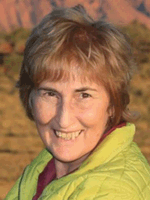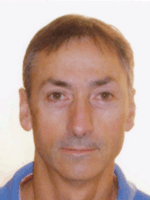Geology and hydrocarbon prospectivity of the northern Houtman Sub-basin
Irina Borissova A B , Chris Southby A , Lisa Hall A , Emma Grosjean A , George Bernardel A , Ryan Owens A and Cameron Mitchell AA Geoscience Australia, GPO Box 379, Canberra, ACT 2601, Australia.
B Corresponding author. Email: Irina.Borissova@ga.gov.au
The APPEA Journal 57(2) 709-715 https://doi.org/10.1071/AJ16027
Accepted: 14 March 2017 Published: 29 May 2017
Abstract
New 2D seismic data acquired by Geoscience Australia in the northern Houtman Sub-basin of the Perth Basin provides important information on the prospectivity of this frontier area. To date, lack of quality seismic data and limited geological understanding have led to the perception that the hydrocarbon potential of the area is very low. However, interpretation of newly collected data suggests that the northern Houtman depocentre contains up to 15 km of pre-breakup sediments comprised of Permian, Triassic and Jurassic successions, which potentially contain multiple source rock, reservoir and seal intervals. The Permian syn-rift succession is confined to a series of large half-graben that are controlled by basement-involved faults separating the Houtman depocentre from the Bernier Platform. This succession is up to 10 km thick and is mapped throughout the inboard part of the new seismic grid. A prominent unconformity at the top of the Permian syn-rift sequence is overlain by a thick (up to 1800 m) and regionally extensive seismic sequence interpreted as the Lower Triassic Kockatea Shale. The thickness of the overlying Triassic succession ranges from approximately 1 km in the inboard part of the basin to up to 5 km further outboard. The Jurassic succession is thickest (up to 4 km) in the outboard part of the basin and is interpreted to contain sequences corresponding to the Cattamarra, Cadda and Yarragadee formations. Our study integrates new results from regional mapping, geophysical modelling and petroleum systems analysis, which enables a more accurate prospectivity assessment of this frontier basin.
Keywords: basin architecture, Perth Basin, prospectivity, seismic interpretation, tectonostratigraphic chart.

Irina Borissova is a senior geoscientist in Geoscience Australia’s Resources Division, Energy Systems Branch. She graduated from Moscow State University and, in 1985, gained a PhD from the Russian Academy of Sciences in marine geology and tectonics. Since joining Geoscience Australia in 1993, Irina has contributed to several projects, particularly to geological studies of frontier areas, including the Kerguelen and Naturaliste Plateaus and the Mentelle Basin. Irina has been working on petroleum prospectivity assessments of the south-west margin sedimentary basins since 2004. Currently she is Section Leader for Energy Frontiers and is leading the northern Houtman Sub-basin prospectivity study. Irina is a member of PESA. |

Chris Southby is a geoscientist in Geoscience Australia’s Resources Division, Energy Systems Branch. Chris completed his Honours at the Australian National University (ANU) in 2004 on palaeoclimate geochemistry of corals from Papua New Guinea. Since joining Geoscience Australia in 2005, he has contributed to several projects under the National CO2 Infrastructure Plan, including the CO2 Storage Potential of the Vlaming Sub-basin. Chris is currently contributing to seismic structural and stratigraphic interpretation of the Houtman Sub-basin. He is a member of PESA. |

Lisa Hall is a Senior Research Scientist at Geoscience Australia, within the Energy Systems Group of Resources Division. Her current research is focused on hydrocarbon prospectivity assessments and petroleum systems modelling in a variety of Australian basins. Lisa holds an MSc in Geology and Geophysics from Cambridge University (1999) and a DPhil in Structural Geology and Neotectonics from Oxford University (2003). Lisa is a member of PESA. |

Emma Grosjean is senior geochemist in Geoscience Australia’s Resources Division, Energy Systems Branch. Emma received her PhD in organic geochemistry from the University of Strasbourg (France) in 2002, and subsequently spent 3 years at the Massachusetts Institute of Technology working on the Precambrian petroleum systems of the South Oman Salt Basin. Emma joined Geoscience Australia in 2005 as a petroleum geochemist to work on the detection of natural hydrocarbon seepage in Australia. She has since been involved in several studies focused on understanding the petroleum prospectivity of Australia’s sedimentary basins, including the Perth and Browse basins. |

George Bernardel is a geoscientist in Geoscience Australia’s Resources Division, Energy Systems Branch. George graduated from Sydney University in 1986 with Honours in geophysics. Since joining Geoscience Australia in 1995, he has been involved in marine seismic acquisition and has contributed to several projects, particularly to geological studies of frontier areas, including the Lord Howe Rise, Great Australian Bight and Perth Basin. George has been working on petroleum prospectivity assessments of the west Australian margin sedimentary basins since 2005. |

Ryan Owens is a geoscientist in Geoscience Australia’s Resources Division, Energy Systems Branch. He graduated from the Australian National University in 2007 with a BSc(Hons) in Geology. Subsequently, Ryan worked in mineral exploration before undertaking a PhD in paleoceanography at the Research School of Earth Sciences, ANU. Ryan joined the northern Houtman Sub-basin prospectivity study in 2015 after completing the Geoscience Australia graduate program. He is a member of PESA. |

Cameron Mitchell has been a senior geoscientist in Geoscience Australia’s Energy Systems Branch for over 10 years and is currently working in the Houtman and Lord Howe Rise. Cameron has also worked on regional tectonostratigraphic studies of the deep-water Otway and Sorell basins, prospectivity studies and CO2 storage assessments (in the Gippsland Basin) and offshore seismic survey planning. Prior to this, Cameron was the Chief Scientist of the 2007 Great Australian Bight sampling survey and has performed satellite and magnetic acquisition projects. Cameron graduated with a BSc(Hons) in Geology from ANU in 2000. He is a member of PESA and EAGE. |
References
Ferdinando, D. D., and Longley, I. (2015). Permian play mapping in the northern Perth Basin. Petroleum in Western Australia September 2015, 17–26.Hackney, R. (2012). Combined marine and land potential – field datasets for the southwest margin of Australia. Geoscience Australia Record 2012/37, Geoscience Australia, Canberra.
Hall, L., Grosjean, E., Borissova, I., Southby, S., Owens, R., Bernardel, G., and Mitchell, C. (2017). Petroleum systems analysis of the Northern Houtman Sub-basin. The APPEA Journal 57, 755–761.
Jackson, M. P. A., Cramez, C., and Fonck, J.-M. (2000). Role of subaerial volcanic rocks and mantle plumes in creation of South Atlantic margins: implications for salt tectonics and source rocks. Marine and Petroleum Geology 17, 477–498.
| Role of subaerial volcanic rocks and mantle plumes in creation of South Atlantic margins: implications for salt tectonics and source rocks.Crossref | GoogleScholarGoogle Scholar |
Jorgensen, D. C., Jones, A. T., Kennard, J. M., Mantle, D., Robertson, D., Nelson, G., Lech, M., Grosjean, E., and Boreham, C. J. (2011). Offshore northern Perth Basin well folio. Geoscience Australia Record 2011/09, Geoscience Australia, Canberra.
Mory, A. J., and Iasky, R. P. (1996). Stratigraphy and structure of the onshore northern Perth Basin, Western Australia. Western Australia Geological Survey Report 46, Department of Minerals and Energy, Perth.
Quirk, D. G., Shakerley, A., and Howe, M. J. (2014). A mechanism for construction of volcanic rifted margins during continental break-up. Geology 42, 1079–1082.
| A mechanism for construction of volcanic rifted margins during continental break-up.Crossref | GoogleScholarGoogle Scholar |
Rollet, N., Jones, A., Kennard, J., Nicholson, C., Grosjean, E., Mantle, D., Bernardel, B., Greinert, J., Kempton, R., Langhi, L., Zhang, Y., Hall, L., Hackney, R., Johnston, S., Boreham, B., Jorgensen, D., Robertson, D., and Petkovic, P. (2013). Northern extension of active petroleum systems in the Perth Basin – an integrated stratigraphic geochemical, geomechanical and seepage study. In ‘The Sedimentary Basins of Western Australia 4: Proceedings of the Petroleum Exploration Society of Australia Symposium’. Perth, WA. (Eds SJ Moss, M Keep) pp. 1–35. (PESA: Perth)
Sanchez, G., Shi, Z., Pryer, L., Romine, K., Westerman, G., Pietrucha, C., Kroll, A., Hall, L., Borissova, I., and Southby, C. (2017). Houtman Sub-basin geophysical modelling. FrogTech and Geoscience Australia report (unpublished).
Symonds, P. S., Frey, O., and Skogseid, J. (1998). Volcanic evolution of the Western Australian continental margin and its implications for basin development. In ‘The Sedimentary Basins of Western Australia 2. Proceedings of PESA Symposium’. Perth, WA. (Eds PG Purcell and RR Purcell.) pp. 33–54. (PESA: Perth)


